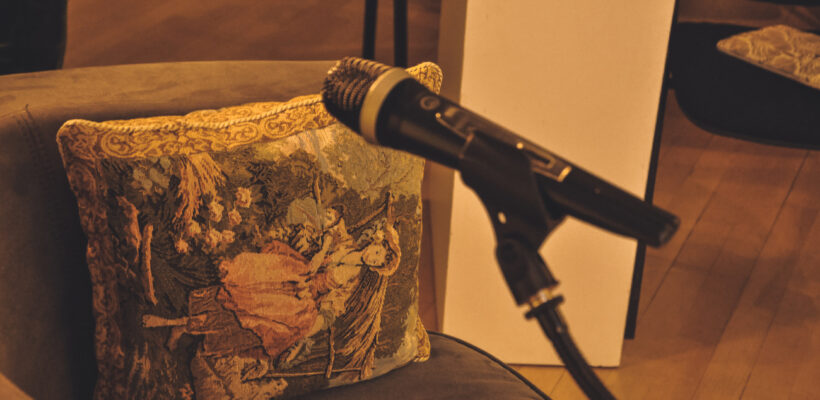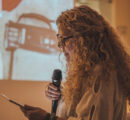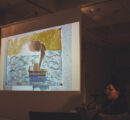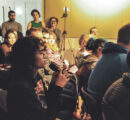
In(Sight) House Talks Inaugural Event: “Does it feel like home?”
2 min readYEREVAN, Armenia — On November 16, the inaugural event of the In(Sight) House Talks series took place at the American University of Armenia’s (AUA) Akian Art Gallery, featuring Arpine Ghambaryan’s research creation project titled Does it feel like home? The series is a part of a larger initiative, Oral History Matters, which aims to amplify the importance of oral history as a research methodology. In(Sight) House Talks spotlights ten oral history-based research projects from the similarly titled exhibition, which took place earlier in August.
The talk presented the epistemological and methodological foundations of Ghambaryan’s research creation through an artistic lens. It was followed by the screening of her film and a Q&A session.
Ghambaryan’s project explored the relationship between place and memory, time and relations, human connections and personal stories by weaving intergenerational narratives of her mother and her grandmother’s friend Shogik with her own. “My film allowed each one of us to plant the seeds of our memories and give life to them as long as we have the privilege of carrying them with us,” she explained in her artist statement.
The project is an attempt to hold a conversation with the world in artistic language. The text and the film work together to produce a multi-layered narrative of Ghambaryan’s research, shedding light on the importance of personal stories in knowledge production. She maintains that the project is her way of dealing with grief: she mourns her grandparents’ passing, as she grieves for disconnecting from Jungliner, a neighborhood in Vanadzor where a significant part of her childhood memories were formed. She explores the ways in which those childhood memories were constructed over time and imprinted in her mind, forever reminding her of the power of that place.
As Ghambaryan noted, “The visual aspects of the film include shots from the neighborhood and explore the places that have been imprinted in our memories, reminding us of how they used to look and the meaning they hold for us.”
The talk generated more discussion on how our relationships with memory, place, and people work together to make ground for self-study, as well as offer a unique method of knowledge creation. It highlighted the importance of oral history as both a qualitative research method and a methodological framework for anti-oppressive research.
Oral History Matters seeks to dismantle dominant research practices by bringing oral history to the forefront of research and challenging conventional narratives.
The In(Sight) House exhibition spotlighted the research projects of ten students from the American University of Armenia (AUA) English and Communications program, each of whom delved into oral history to explore and narrate stories that resonate deeply with the human experience. The Akian Art Gallery at AUA underwent a transformation during the In(Sight) House exhibition, becoming a symbolic house where each room was dedicated to showcasing the work of a different student. This creative approach allowed visitors to step into the world of each student’s research and experience firsthand their diverse stories.
Founded in 1991, the American University of Armenia (AUA) is a private, independent university located in Yerevan, Armenia, affiliated with the University of California, and accredited by the WASC Senior College and University Commission in the United States. AUA provides local and international students with Western-style education through top-quality undergraduate and graduate degree and certificate programs, promotes research and innovation, encourages civic engagement and community service, and fosters democratic values.









